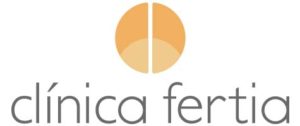PICSI Technique

What is PICSI technique?
The PISCI or Physiological Intra-Cytoplasmic Sperm Injection is an innovative technique based on the affinity of the spermatozoid to the cells that surround the ovum. This affinity between eggs and sperm is possible thanks to a series of receptors on the cell membrane. On occasions, the presence of these receptors is related to the quality of the ovum, or to defects in the DNA chain.
The receptors detected by PICSI are related to sperm maturity. In this way, the sperm selected after this process will be of a higher quality and therefore more likely to fertilize the egg correctly.
When PICSI is used?
At Clinica Fertia we offer PICSI as a succesful alternative when:
Couples have a history of several failed In-Vitro Fertilisation cycles.
Embryos are of poor quality, and are not attributable to the ooyctes.
Couples have a history of repeated miscarriages.
The quality of the sperm is low.
Technique applied to PICSI
The physiological selection of spermatozoids offers very good results in In-Vitro Fertilisation treatments. At Fertia clinic we have been offering this technique since 2011, with very good results in terms of fertilisation and pregnancy rates.
Additionally, PICSI has been linked to a lower probability of suffering a miscarriage.

Frequently asked questions about reproduction treatments
If you would like more information about our treatments, we are always available to help and answer any of your questions.
How long do I have to wait to start treatment?
How many attempts can I make?
In the case of artificial insemination, here at the clinic we recommend a maximum of four attempts, since 90% of pregnancies occur in the first four cycles.
Regarding In-vitro fertilisation or microinjection, our clinic never makes more than four attempts using these techniques.
In the case of egg donation, it is more difficult to establish a limit, this will normally be determined by psychological and also economic factors.
Can you use these techniques when you have already entered menopause?
In these cases, the reception of eggs from a donor must be used.
What are the biggest concerns of egg or sperm recipient couples?
Another factor that concerns a couple is the health of the donors and the physical resemblance to them.
In our centre, both in the case of sperm donors and egg donors, our goal is to seek that the physical resemblance is as similar as possible to the parents.
Are these treatments expensive?
Clínica Fertia is a pioneer in maintaining an honest and transparent policy. Since 2002 we have published the information of the cost of our treatments on our website.
